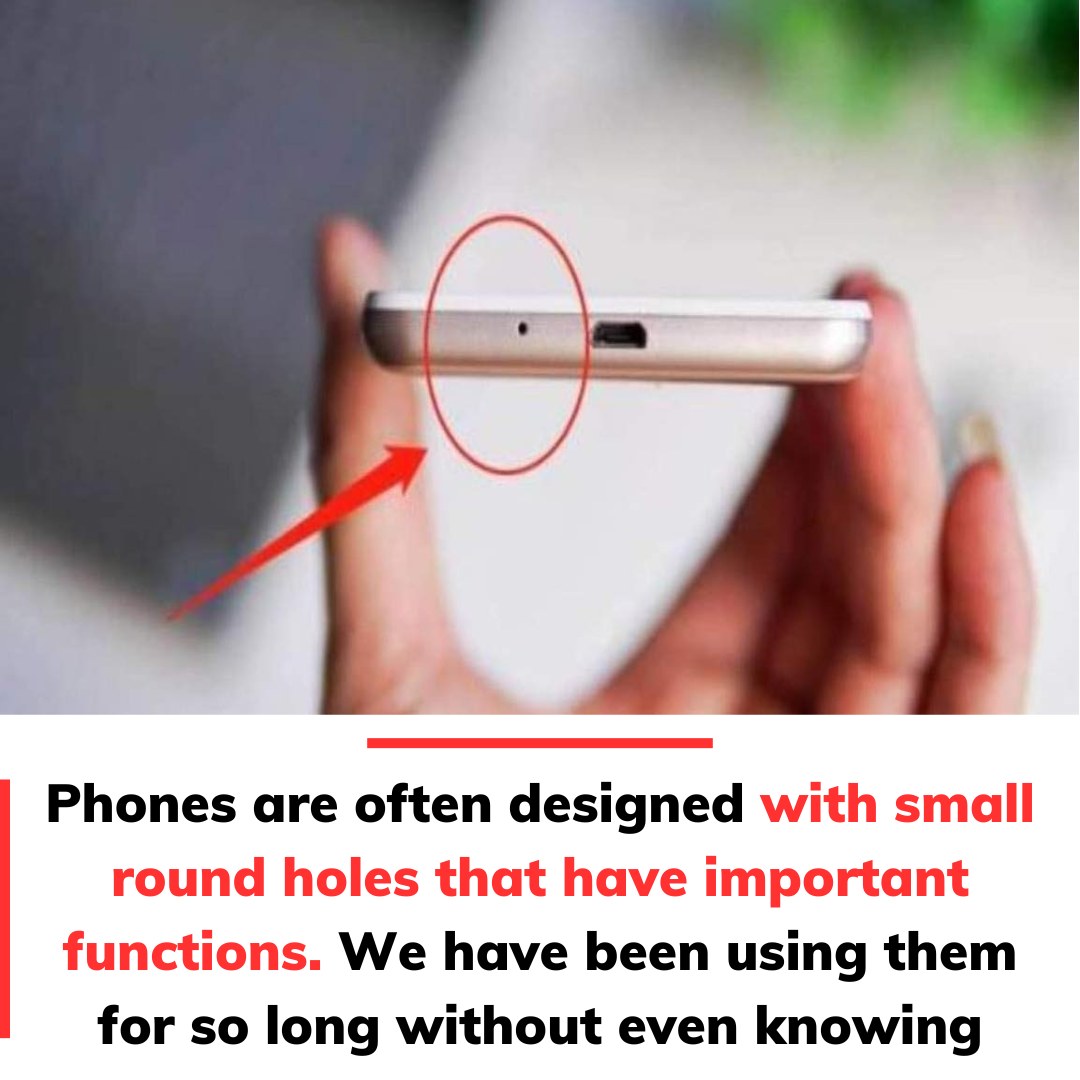Have you ever noticed the small, round hole on the top or back of your smartphone and wondered what it’s for? At first glance, it might seem like an insignificant design detail, something purely decorative or perhaps a vent. However, that tiny hole serves a far more important purpose than most people realize. It houses your phone’s secondary microphone, a small but powerful tool responsible for noise cancellation during calls, voice recordings, and even video shooting. Without it, your phone conversations would be filled with distracting background noise, making it difficult for the person on the other end to focus on your voice. This seemingly unnoticeable feature is quietly working behind the scenes to ensure every conversation, voice command, and recording sounds crystal clear.

Modern smartphones are equipped with two primary microphones that work together seamlessly. The first, or primary microphone, is located at the bottom of the phone. Its main role is to capture your voice when you’re speaking directly into your device. This microphone ensures that your words are transmitted clearly and accurately. Meanwhile, the secondary microphone, usually located at the top of your phone or near the rear camera, has a completely different role. Instead of focusing on your voice, it picks up environmental noise—sounds like traffic, wind, the hum of an air conditioner, or chatter in a busy café. While one microphone zeroes in on your speech, the other captures and analyzes background noise. The phone’s internal software then processes both audio signals, isolating your voice and minimizing ambient sounds. This clever teamwork creates the seamless noise-cancellation technology we rely on every day.
Why is noise cancellation such an essential feature? Think about how often you take calls in less-than-ideal conditions—walking down a noisy street, sitting in a bustling coffee shop, or dealing with the constant hum of office equipment. Without noise cancellation, your voice would compete with all these sounds, leaving the person on the other end struggling to hear you. The secondary microphone ensures these environmental noises are filtered out, allowing your voice to remain sharp and clear. It’s not just about convenience; it’s about ensuring effective communication in any environment. Whether you’re taking a business call, catching up with a friend, or giving instructions to someone, clarity is non-negotiable. The secondary microphone excels at reducing distracting noise, making conversations smoother and more pleasant for everyone involved.
But the benefits of the secondary microphone go far beyond just phone calls. It also plays a significant role in other common smartphone functions. For example, when you use voice assistants like Siri, Google Assistant, or Alexa, the secondary microphone ensures your commands are heard accurately, even if there’s background noise. Have you ever tried recording a video in a busy area? That tiny microphone helps filter out unwanted sounds, ensuring your videos have clean, professional-quality audio. Even simple voice recordings, like memos or podcasts, benefit from the enhanced audio quality provided by the secondary microphone. It’s an unsung hero that contributes to multiple aspects of your smartphone experience without drawing attention to itself.
The strategic placement of these microphones is no accident, either. The primary microphone, positioned at the bottom of your phone, is located close to your mouth, ensuring it captures your voice directly and accurately. The secondary microphone, situated at the top or near the camera, is intentionally placed farther away to better detect ambient noise. Together, these microphones create a balanced system where your voice takes center stage while unwanted sounds are suppressed. This clever positioning allows your phone to analyze and differentiate between essential audio signals and distracting background noise. The result is a phone call, video, or recording that sounds as clean and polished as if you were speaking in a perfectly quiet room.
Behind this noise-cancellation magic lies advanced technology and sophisticated algorithms. These algorithms compare the audio signals from both microphones in real-time, identify patterns, and digitally remove unwanted background noise. Whether it’s the loud honking of a car horn, the sound of machinery, or a steady hum from an air conditioning unit, the software processes these sounds and minimizes their impact on your audio output. Even subtle sounds, like wind rustling through trees or faint background chatter, are significantly reduced. This level of precision ensures your voice remains the focal point, no matter where you are.
It’s incredible to think that such a small, nearly invisible hole on your phone plays such a critical role in your daily communication. It’s a testament to the careful design and engineering that goes into every modern smartphone. While it might seem like a minor detail, this little microphone is one of the most powerful tools for ensuring effective communication in our increasingly noisy world. Whether you’re chatting on a call, shooting a video, recording a memo, or giving voice commands, this tiny feature works tirelessly behind the scenes to deliver clear, high-quality sound.
So, the next time you spot that small hole on your smartphone, remember—it’s not just a random design element or a pointless detail. It’s a sophisticated piece of technology designed to make your life easier and your conversations clearer. It might be small, but its impact is enormous. Share this knowledge with friends and family, and let them in on the secret behind their crystal-clear calls and flawless recordings. In a world where communication is everything, that little round hole proves that sometimes, the smallest features make the biggest difference.





